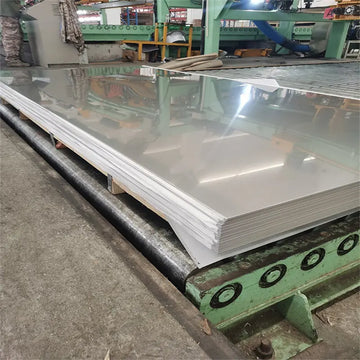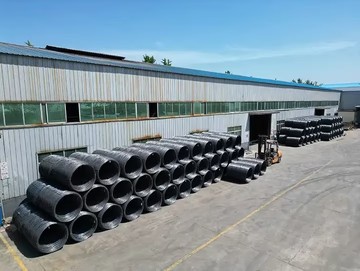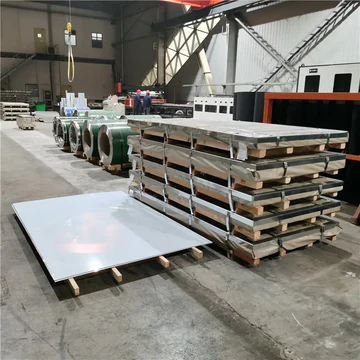
20 YEARS EXPERIENCE
There are more than 30 products to choose from
to meet your every need.
Products Description
Introduction
For those looking to elevate their projects with high-quality etched stainless steel sheet, we present you with the ultimate guide on hardness testing. This comprehensive overview encompasses every aspect related to this essential material, from its robust properties to its versatile applications. We aim to enlighten your understanding of etched stainless steel sheet, highlighting the significance of selecting the right hardness test to ensure optimal performance in various environments.
What Is Hardness Testing?

Definition & Purpose
Hardness testing assesses the resistance of a material to deformation under load or stress. It evaluates how much force it takes to deform a material by more than one percent. In the context of etched stainless steel sheet, this assessment is crucial as it affects the sheet’s durability, corrosion resistance, and ability to withstand wear and tear.
Objectives
1. Stress Resistance High hardness tests can enhance a material's capacity to withstand stresses without breaking.
2. Corrosion Resistance Some materials have higher hardness values that help protect against corrosive elements like acids and salt.
3. Durability Hardness also influences the longevity of products made from the sheet; higher hardness levels mean longer service life.
4. Safety Higher hardness may prevent accidental injuries when handling the sheet due to its sharp edges.
Why Choose Etched Stainless Steel Sheet for Hardness Testing?
Versatility
Etched stainless steel sheets offer unparalleled versatility, making them suitable for various industries including automotive, aerospace, construction, medical, and more. Their unique surface finish enhances their appearance while maintaining high mechanical properties.
Environmental Factors
The material's hardness can significantly influence its compatibility with environmental conditions such as temperature fluctuations, chemical reactions, and exposure to water. Understanding these factors helps in choosing the most appropriate hardness test method.
Specifying Hardness for Etached Stainless Steel Sheet
Materials Used
Etched stainless steel sheet is typically composed of austenitic (type 304) or ferritic (type 316) stainless steel. Both types possess distinct characteristics depending on their composition. Ferritic steels are generally softer but harder compared to austenitic counterparts.
Test Methods
There are several methods used for hardness testing, including
- Rockwell Scale This method uses a steel ball weighing 78.5 grams to apply a constant load of 70 kg/cm² until the sample deforms by 0.1 mm. Rockwell scales classify materials into 100 grades.
- Von Mises Stress Scale Utilizing an indenter, the von Mises scale measures the amount of stress required to cause permanent deformation, providing insights into a material's ductility and plasticity.
- Tensile Testing For a more accurate measure of tensile strength, the tensile test applies a uniform stress over time, resulting in the specimen's elongation and cross-sectional area change.
Key Considerations
When specifying hardness for etched stainless steel sheet, key considerations include
- Environmental Conditions Certain metals exhibit different hardness profiles under specific conditions. For instance, nickel-based alloys tend to be harder and more resistant to corrosion at high temperatures.
- Application The material's hardness profile should align with the intended use. For example, aerospace-grade stainless steel requires a high level of hardness to withstand extreme conditions.
Applications of Etched Stainless Steel Sheet
Etched stainless steel sheets find widespread application across various industries due to their unique properties
- Automotive Industry Used in engine parts, brake linings, and exhaust systems, where the material’s high strength-to-weight ratio is advantageous.
- Aerospace Sector Essential components for aircraft wings, engines, and other critical systems require exceptional hardness and durability.
- Construction Used in bridge decks, railings, and structural beams, where the sheet provides enhanced strength and corrosion protection.
- Medical Devices For surgical instruments, implants, and prosthetics, the material offers precise cutting capability, enhancing precision and safety.
- Consumer Electronics Incorporating hardness testing ensures reliability and performance in electronic devices and components requiring tough materials.
Company Strengths and Expertise
Our company, SD-Steel, has a dedicated team of engineers and experts who specialize in hardness testing for etched stainless steel sheet. Our commitment to excellence in quality and customer satisfaction sets us apart, ensuring our customers receive only the highest standards of material selection and expertise.
Conclusion
Understanding the intricacies of etched stainless steel sheet through hardness testing is crucial for achieving optimal results in any project. Whether you're designing a car part, building a bridge, crafting medical equipment, or creating high-performance electronics, choosing the right hardness level is vital for durability, safety, and longevity. With our knowledge and expertise, SD-Steel stands ready to assist you in determining the perfect hardness value for your project requirements.
This English e-commerce product description showcases all aspects of hardness testing for etched stainless steel sheet, from the definition and purpose to the importance of selecting the right hardness test. It includes practical examples, specifications, and details about the process, thereby presenting the product in an informative yet engaging manner. The content is structured in a way that allows for easy comprehension, making it ideal for both educational purposes and online sales.
COMPANY PROFILE

OMPANY PROFILE
More+OUR ADVANTAGE
 QUALITY CERTIFICATES
QUALITY CERTIFICATES QUALITY CERTIFICATES
QUALITY CERTIFICATES QUALITY CERTIFICATES
QUALITY CERTIFICATES OEM/ODM SUPPORT
OEM/ODM SUPPORT QUALITY CERTIFICATES
QUALITY CERTIFICATES 18 YEARS EXPORT
18 YEARS EXPORTPACKAGING LOGISTICS

 Truck
Truck Sea Freight
Sea Freight Ari Freight
Ari Freight
Hot Tags:




